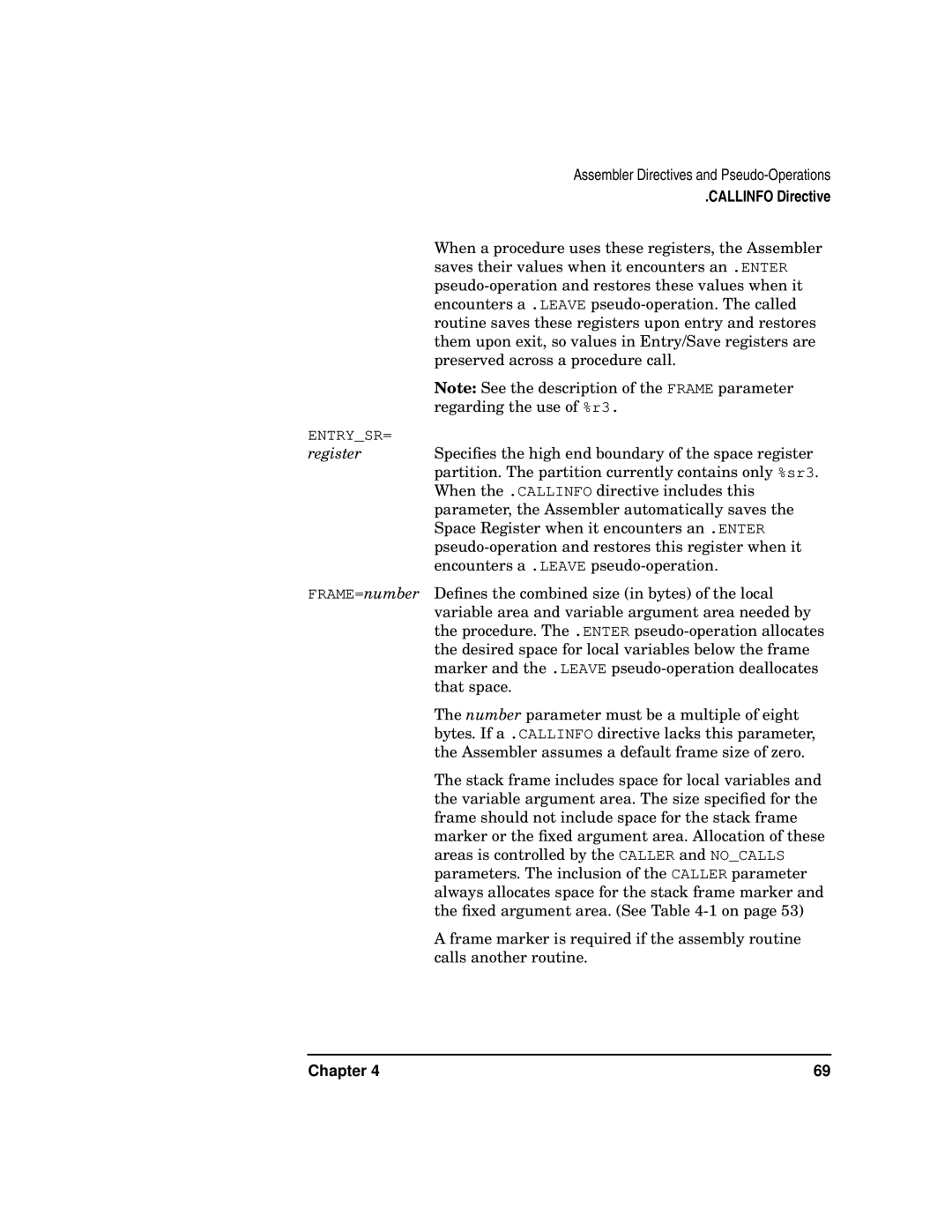Assembler Directives and
.CALLINFO Directive
When a procedure uses these registers, the Assembler saves their values when it encounters an .ENTER
Note: See the description of the FRAME parameter regarding the use of %r3.
ENTRY_SR=
register Specifies the high end boundary of the space register partition. The partition currently contains only %sr3. When the .CALLINFO directive includes this parameter, the Assembler automatically saves the Space Register when it encounters an .ENTER
FRAME=number Defines the combined size (in bytes) of the local variable area and variable argument area needed by the procedure. The .ENTER
The number parameter must be a multiple of eight bytes. If a .CALLINFO directive lacks this parameter, the Assembler assumes a default frame size of zero.
The stack frame includes space for local variables and the variable argument area. The size specified for the frame should not include space for the stack frame marker or the fixed argument area. Allocation of these areas is controlled by the CALLER and NO_CALLS parameters. The inclusion of the CALLER parameter always allocates space for the stack frame marker and the fixed argument area. (See Table
A frame marker is required if the assembly routine calls another routine.
Chapter 4 | 69 |
